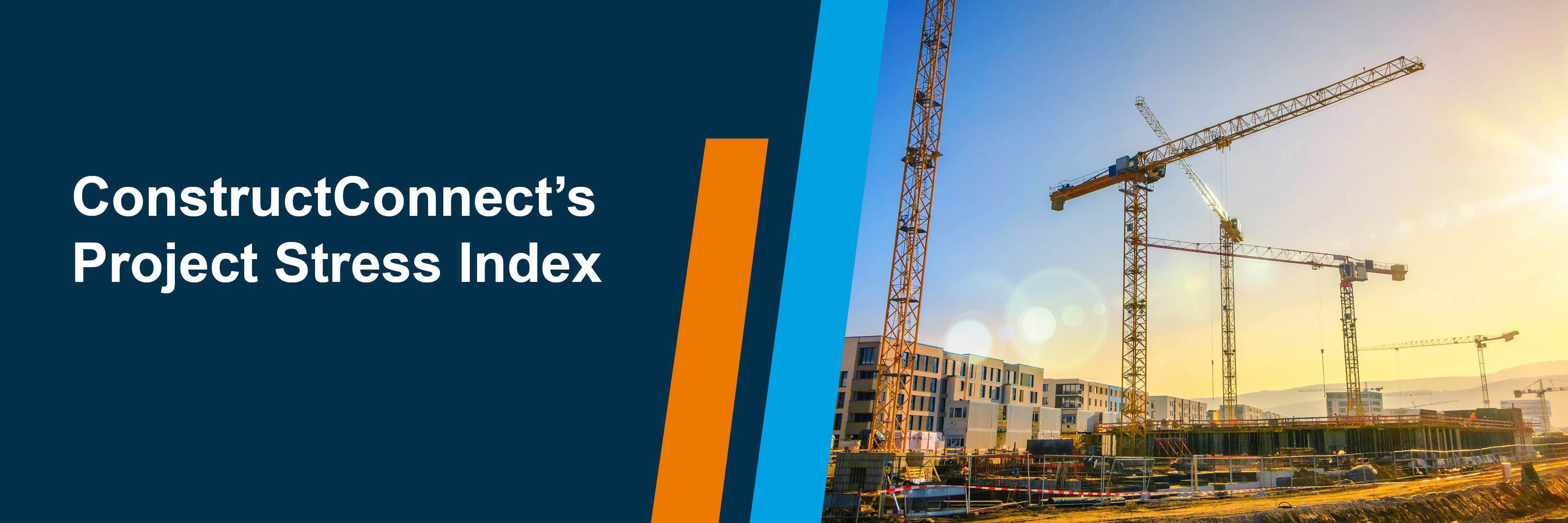Read this article to understand the level of U.S. nonresidential construction projects that have been delayed, on hold, or abandoned.
COMPOSITE OVERVIEW
The Project Stress Index (PSI) composite closed August 2024 at 90.4, falling 6.3% during the month.
This latest decline follows July’s notable drop of 14.2%. August’s month-over-month decline resulted from falling on hold (-3.9%) and abandonment (-8.0%) activity which more than offset the rise in bid date delayed activity (+8.9%).
Since the beginning of the year, total stress activity has declined by more than 25%, as on-hold and abandonment activity readings have fallen by 31% and 43%, respectively. The number of projects experiencing delayed bid dates has remained little changed and is down less than 1% since the start of the year.
The Federal Reserve’s near promise of rate cuts in September—with many investors believing more are expected to follow in the months to come—is already being felt in debt markets, with some yields already lower by 25 basis points (0.25%).
Falling yields, and with them lower mortgage expenses, will enable more projects in their pre-construction phase to “pencil in” meaning they become sufficiently profitable on paper that their owners can justify moving forward with their construction. As the financial hurdles preventing projects from penciling in further fall with additional rate cuts in 2025, owners and developers seem to be wisely delaying projects rather than abandoning them.
COMPONENTS MONITOR
| Delay Bid Date |
On Hold |
Abandoned |
 |
 |
 |
Sector Status Update
Public and private projects often exhibit distinct stress trends due to their disparate financing sources. Strong expectations for a near-term falling-rate environment would in theory disproportionately affect the private sector which is much more sensitive and responsive to changes in financial market outlook.
However, our sector data indicates that both sectors have greatly benefited from the financial and economic factors driving stress readings lower.
The level of public projects on hold thus far in the year suggests that 2024 maybe one of the best years for the industry since 2020. The level of private projects on hold year-to-date is also on track to come in well below the heightened readings of 2023 although not good enough to beat the low levels recorded in 2021 and before interest rates began rising. Abandonment levels have fallen across both sectors.
August’s private abandonments are below the levels of a year ago and well below the surge experienced in August of 2022. In the public sector August typically marks a seasonal high point for abandonments and yet this year’s August reading is one of the lowest recorded this calendar year. The latest monthly reading is 30% and 17% below same-month readings from 2022 and 2023 respectively.
About the Project Stress Index
The Project Stress Index (PSI) composite represents an equal-weight measure of the seasonally adjusted level of pre-construction projects that have experienced a delayed bid date, have been placed on hold, or have been abandoned in the last 30 days. The PSI monitors nonresidential and multifamily projects in their preconstruction phases only and thus excludes any single-family home construction. Each component has been seasonally adjusted and then indexed against its 2021 average weekly reading. The independent tracking of each status type gives unique insights into the timing, direction, and amplitude of market changes. Additional information about the PSI, including detailed data about the individual readings for delayed, on hold, and abandoned projects can be found here.
